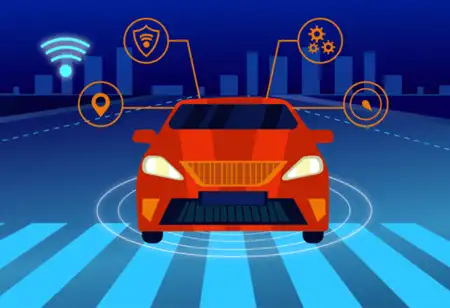THANK YOU FOR SUBSCRIBING
THANK YOU FOR SUBSCRIBING
Be first to read the latest tech news, Industry Leader's Insights, and CIO interviews of medium and large enterprises exclusively from Auto Tech Outlook

By
Auto Tech Outlook | Thursday, December 09, 2021
Stay ahead of the industry with exclusive feature stories on the top companies, expert insights and the latest news delivered straight to your inbox. Subscribe today.
Persons believe that autonomous cars will create a brighter future by increasing road safety, lowering infrastructure costs, and improving mobility for children, the elderly, and the disabled.
FREMONT, CA: Sensors enable autonomous vehicles to see and sense everything on the road and collect data required for safe driving. This data is also used to design a path from A to B and send commands to the car's controls, such as steering, acceleration, and braking.
Sensor data from autonomous vehicles can also be shared between cars connected via M2M technology. This is called vehicle-to-vehicle communication and might be a massive help in driving automation.
Cameras, radars, and lidars are the primary sensors used in today's autonomous vehicles.
Camera sensors: Autonomous cars are frequently equipped with video cameras and sensors that enable them to observe and understand items on the road in the same way that human drivers do with their eyes. By equipping automobiles with these cameras from every angle, they may keep a 360° view of their exterior surroundings, delivering a complete picture of the traffic conditions in their vicinity.
Today, 3D cameras are accessible and are used to display visuals that are highly detailed and realistic. These vision sensors detect, identify, and calculate the distances between objects and the vehicle automatically. For instance, the cameras can recognise other vehicles, pedestrians, bicycles, traffic signs and signals, road markings, bridges, and guardrails.
Radar sensors: Radar (Radio Detection and Ranging) sensors are critical to autonomous driving's general function: they transmit radio waves that detect objects and calculate their distance and speed in real-time with the vehicle.
Both short- and long-range radar sensors are often distributed throughout the vehicle, with each serving a distinct purpose. While short-range (24 GHz) radar applications provide blind-spot monitoring, optimal lane-keeping assistance, and parking help, long-range (77 GHz) radar sensors perform functions such as automatic distance control and brake assistance. In comparison to camera sensors, radar systems typically have no difficulty recognising objects in fog or rain.
Lidar sensors: Lidar (Light Detection and Ranging) sensors operate similarly to radar systems, except they employ lasers rather than radio waves. Apart from determining the distances between various items on the road, lidar enables the creation of three-dimensional images of detected objects and the mapping of the surrounding area. Additionally, lidar can be designed to provide a 360-degree map of the vehicle’s area rather than depending on a limited field of view. These two benefits are why manufacturers of autonomous vehicles such as Google, Uber, and Toyota choose lidar technology.
Additionally, lidar can be designed to build a 360° map of the vehicle’s area, rather than depending solely on a small field of view. These two advantages have prompted manufacturers of autonomous vehicles such as Google, Uber, and Toyota to include lidar technology in the location of their cars.
 Copyright © 2025 AutoTech Outlook. All Rights Reserved | Privacy Policy | Subscribe | Sitemap | About us | Feedback Policy | Editorial Policy
Copyright © 2025 AutoTech Outlook. All Rights Reserved | Privacy Policy | Subscribe | Sitemap | About us | Feedback Policy | Editorial Policy 



